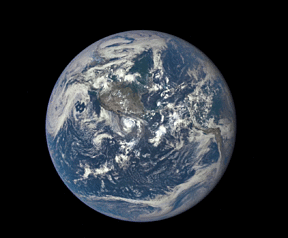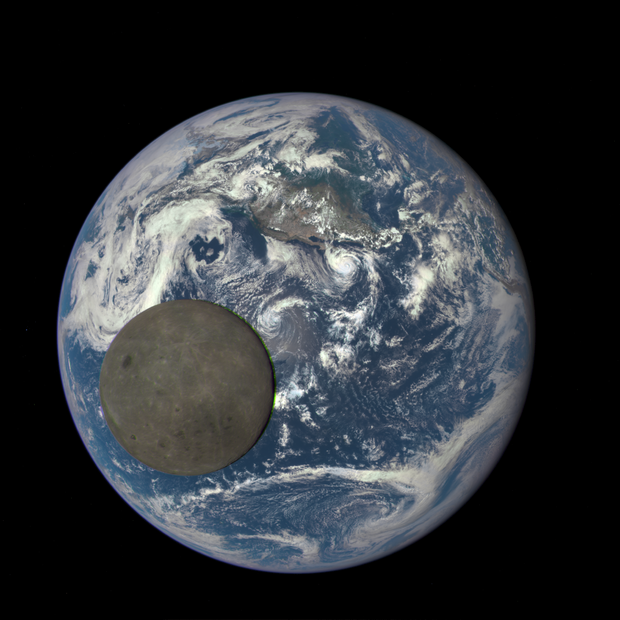The Deep Space Climate Observatory sent last month, the first photos of a fully illuminated by the sun the earth where the moon passes in front of draws. The satellite, which in February was launched, 1.6 million kilometers away.
 The American space agency NASA showed the rest of the world Wednesday-enjoy the moon for the earth pass. It delivers a picture that is not often seen, namely, for us earthlings always invisible side of the moon.
The American space agency NASA showed the rest of the world Wednesday-enjoy the moon for the earth pass. It delivers a picture that is not often seen, namely, for us earthlings always invisible side of the moon.
The image was shot by the Earth Polychromatic Imaging Camera on board of the DSCOVR satellite. The EPIC is, among other photos of the sunny side of the earth, and sees ten different wavelengths, from ultraviolet to near-infrared. In that way the satellite under the more ozone – and aerosolhoeveelheden monitors. The satellite is in such a way between the earth and the sun that this is always the sunny side in the visor, also known as the lagrange point.
The photos with ‘natural colors’ are obtained by combining three separate monochrome images that are part of the ten different images in quick succession shot. It then goes to the red, green and blue images. Therefore, there is a small green border on the right side of the moon to see and a bit of red and blue, to the left, also called ‘offset’.
Striking things on this side of the moon are among the Tsiolkovskiy crater in the lower left, and the Mare Moscoviense in the upper left corner. If EPIC starts off with his real work, the NASA daily images of the earth, place it on a special site.

